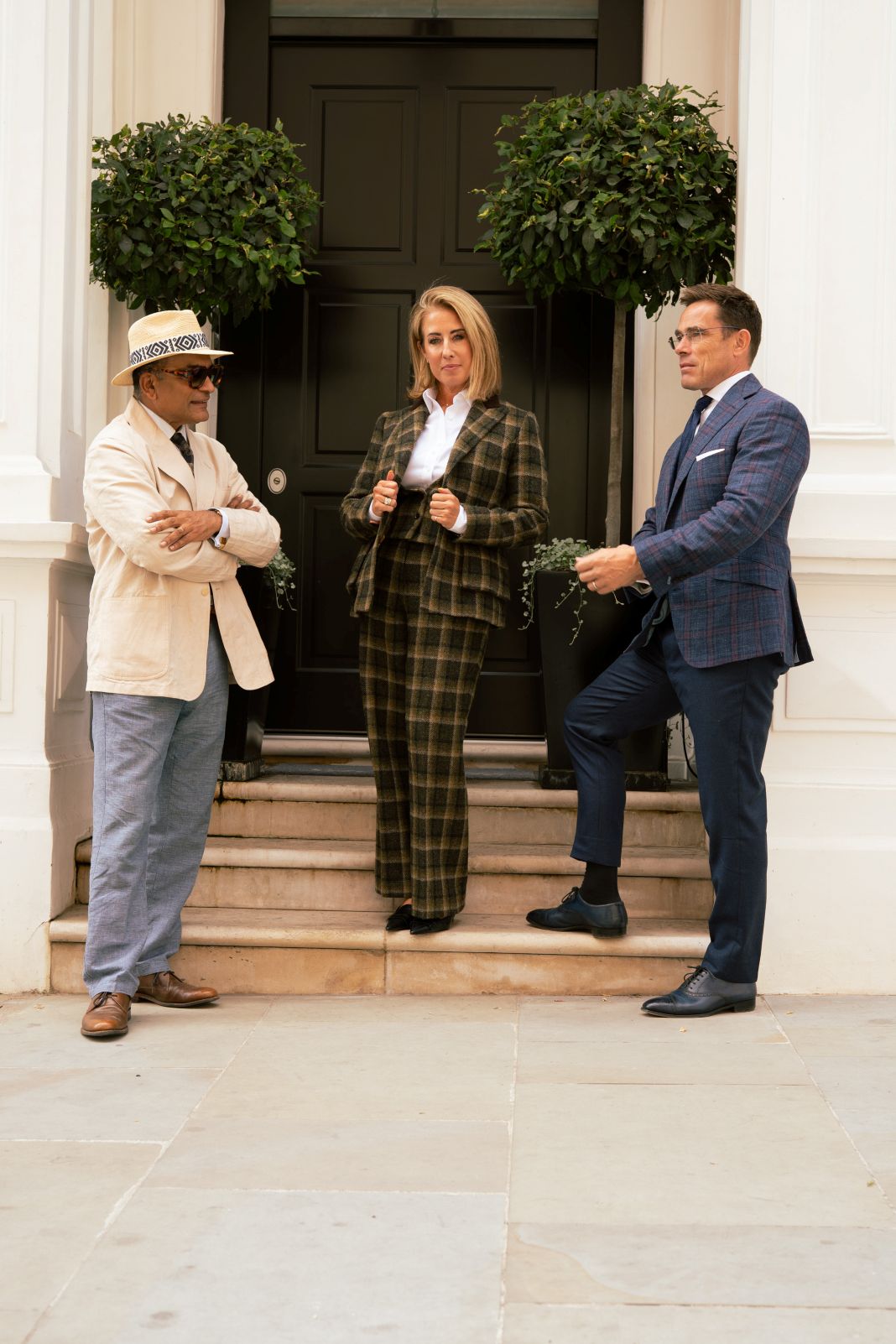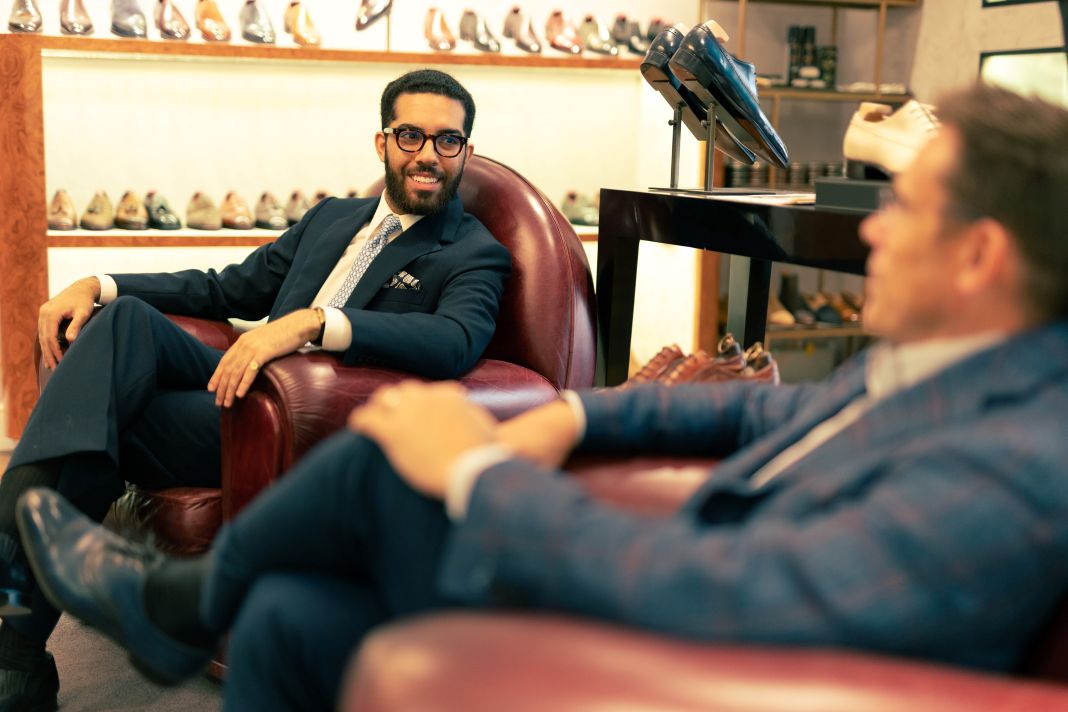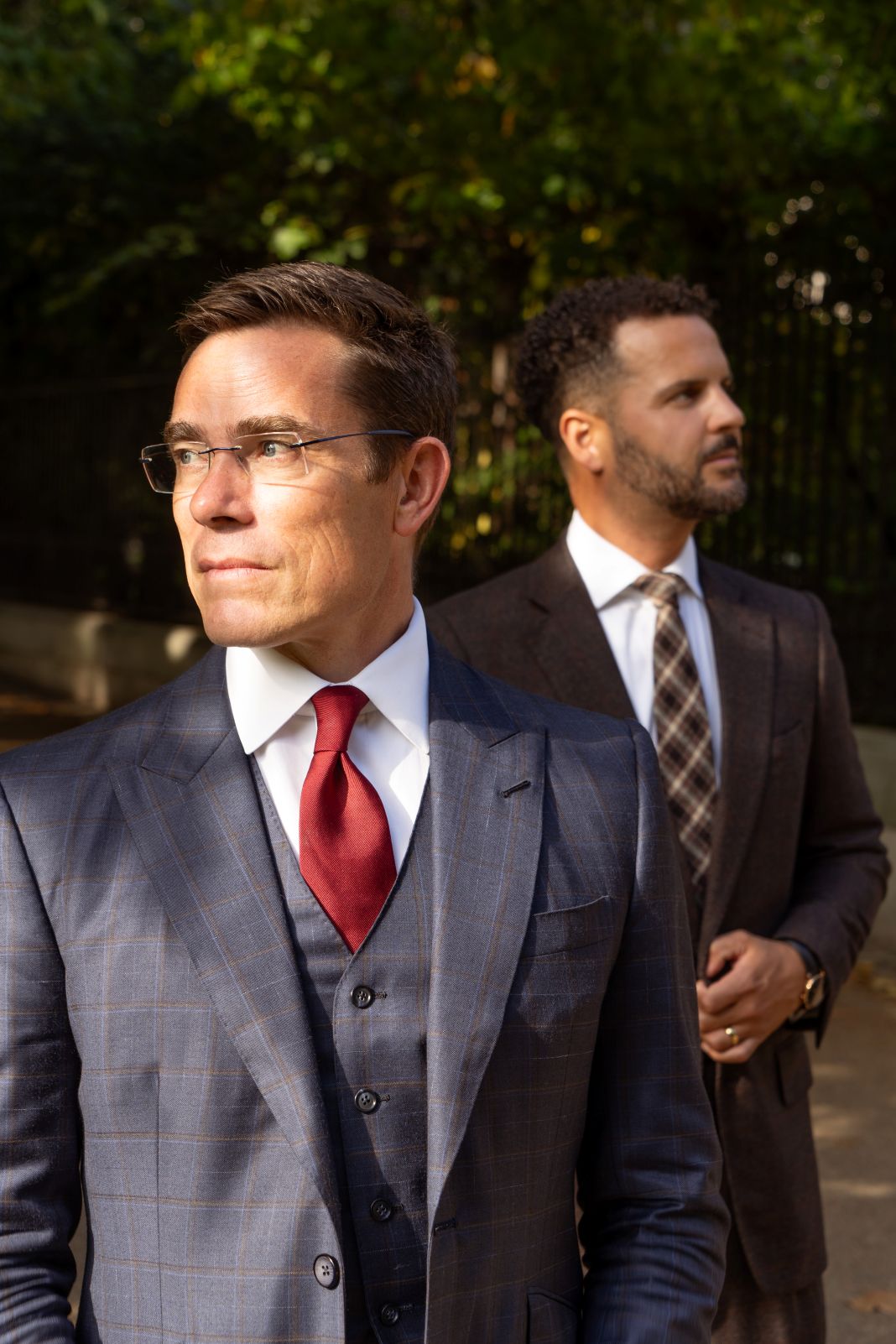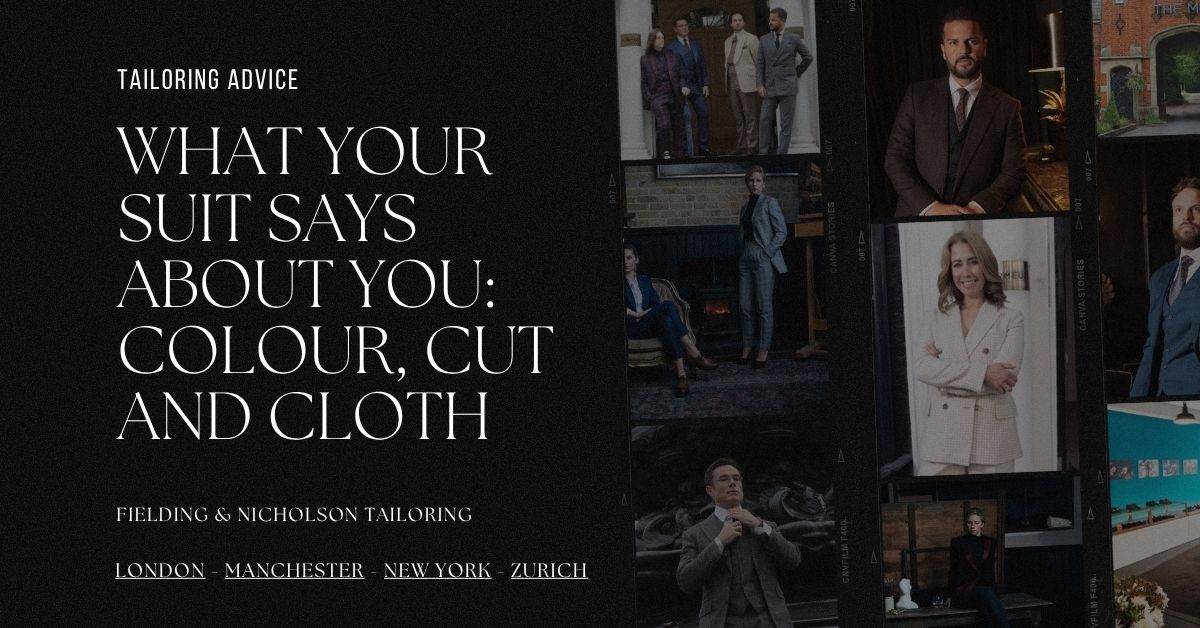What does your suit really say about you?
Long before you speak, your suit is already saying something. It hints at your values, self-awareness, and how seriously you take the moment. Like a firm handshake or an open expression, your suit sends subtle signals that shape how people respond to you and influence their sense of your trustworthiness, competence, or character.
Why Your Suit Speaks Before You Do
As you enter a room, people start making judgements based on what they see. The way a suit interacts with your posture and movement is part of what experts call suit body language which is the visual cues of cut, fit, and fabric that shape nonverbal impressions. Research by Albert Mehrabian shows that body language and appearance carry significant weight in first impressions.
A well-chosen suit is part of that message. It reflects your professional identity, your attention to detail, and the kind of presence you aim to project. Whether you’re at a meeting, delivering a presentation, or attending a formal event, every part of your suit from the colour, shape, and fabric all plays a role in how you’re perceived.
Even subtle details like lapel width or texture speak volumes. Dressing with intention rather than habit is at the core of personal branding through clothing.
Pro Tip: Choose fabric weight and colour with your typical setting in mind as context shapes perception.
Book Your Bespoke Suit Consultation
Ready to build a wardrobe that speaks for you? Work with a Fielding and Nicholson stylist to create your signature look.
Why Your Suit Speaks Before You Do
As you enter a room, people start making judgements based on what they see. The way a suit interacts with your posture and movement is part of what experts call suit body language which is the visual cues of cut, fit, and fabric that shape nonverbal impressions. Research by Albert Mehrabian shows that body language and appearance carry significant weight in first impressions.
A well-chosen suit is part of that message. It reflects your professional identity, your attention to detail, and the kind of presence you aim to project. Whether you’re at a meeting, delivering a presentation, or attending a formal event, every part of your suit from the colour, shape, and fabric all plays a role in how you’re perceived.
Even subtle details like lapel width or texture speak volumes. Dressing with intention rather than habit is at the core of personal branding through clothing.
Pro Tip: Choose fabric weight and colour with your typical setting in mind as context shapes perception.
Book Your Bespoke Suit Consultation
Ready to build a wardrobe that speaks for you? Work with a Fielding and Nicholson stylist to create your signature look.
Why Your Suit Speaks Before You Do
As you enter a room, people start making judgements based on what they see. The way a suit interacts with your posture and movement is part of what experts call suit body language which is the visual cues of cut, fit, and fabric that shape nonverbal impressions. Research by Albert Mehrabian shows that body language and appearance carry significant weight in first impressions.
A well-chosen suit is part of that message. It reflects your professional identity, your attention to detail, and the kind of presence you aim to project. Whether you’re at a meeting, delivering a presentation, or attending a formal event, every part of your suit from the colour, shape, and fabric all plays a role in how you’re perceived.
Even subtle details like lapel width or texture speak volumes. Dressing with intention rather than habit is at the core of personal branding through clothing.
Pro Tip: Choose fabric weight and colour with your typical setting in mind as context shapes perception.
Book Your Bespoke Suit Consultation
Ready to build a wardrobe that speaks for you? Work with a Fielding and Nicholson stylist to create your signature look.
Suit Colours and What They Say About You
What does each suit colour communicate?
Different colours give off different signals. Navy suggests calm authority and professionalism. Black leans more formal and commanding. Charcoal grey sits somewhere in between, serious yet adaptable.
Skin tone and contrast influence how colour is received too. A navy suit might pop more on someone with fair skin and light hair, while olive or brown can add warmth and approachability.
Think of colours as tools:
-
Navy: Balanced, dependable, business ready
-
Charcoal: Assertive without being stark
-
Black: Classic, sharp, best for formal settings
-
Brown: Friendly, open, informal
-
Olive or tan: Creative, expressive, especially in warm climates
Suit colour psychology helps you decide what impression to aim for, rather than simply following trends. Knowing the meaning of suit colours can help align your visual identity with your goals.
Pro Tip: Repeating details like lapel width or jacket length helps build a recognisable, consistent image.
The Cut of Confidence: How Fit Shapes Perception
How does your suit’s fit affect perception?
Fit communicates as much as colour. The structure and silhouette of a suit shape how you carry yourself and how others interpret your presence.
Regional Tailoring Traditions
Tailoring styles vary across regions, and each sends a different message:
-
British tailoring (Savile Row): Structured and precise, often with roped shoulders and sharp lines. Suggests control, authority, and timeless professionalism
-
Italian tailoring (Neapolitan): Lightweight and relaxed, with minimal padding and soft shoulders. Communicates ease, creativity, and modern flair
-
American tailoring: Often more classic and boxy, with natural shoulders and looser fits. Conveys tradition, comfort, and understated formality
Key elements to consider:
-
Lapel width: Wide lapels feel bold. Slim lapels feel modern
-
Shoulder padding: Adds sharpness. Less padding feels more relaxed
-
Waist shape: A cinched waist shows control, but overdoing it can look restrictive
-
Trouser tapering: Modern and tidy until it becomes too tight
Knowing what your suit cut signals helps you choose a silhouette that reflects both personality and purpose. A structured shoulder can act like a visual exclamation mark in the right setting.
Create Your Capsule Suit Collection
Start with three versatile suits that work year-round and align with your personal brand.
Fabric as a Statement: What Texture Says About You
What message does your fabric choice send?
Fabric affects more than just comfort. It influences how others read your presence. A crisp worsted suit looks polished and professional. A soft flannel feels mature and thoughtful. Linen suggests creativity and ease.
Use fabric to support your message:
-
Worsted wool: Smooth and sharp. Ideal for formal work environments
-
Flannel: Heavier and more grounded
-
Tweed: Rugged and individual
-
Linen: Relaxed and weather appropriate
-
Cotton: Clean, modern, and laid back
Weight and sheen also play a role. Heavier fabrics feel anchored. Lighter cloth with movement gives a more conversational energy. Understanding suit fabric meaning helps you choose not just what looks good, but what communicates well.
Your Personal Suit Palette: Build a Wardrobe with Meaning
How do you build a cohesive suit wardrobe?
Think beyond one good suit. A well-planned wardrobe functions as a toolkit, with each piece earning its place.
Start with essentials:
-
Navy: Reliable and versatile
-
Charcoal: Slightly more formal but flexible
-
Black: Reserved for evening or very formal occasions
Then add interest:
-
Brown or olive: Show personality, perfect for cooler seasons
-
Lighter greys or soft blues: Brighter for warmer days or casual settings
Accessories like ties, shirts, and pocket squares should enhance your message, not distract from it. Too many tones or textures can dilute the effect.
Keeping your colours consistent makes it easier to mix and match. This is the foundation of a capsule suit collection that works year-round.
Dress for the Room: Context, Culture and Intention
How can context change what your suit says?
A suit’s message depends on where and how it’s worn. The same navy suit might project confidence in a boardroom but feel stiff in a creative studio.
Consider the setting:
-
Business: Navy or charcoal, crisp shirts, minimal accessories
-
Creative: Softer tailoring, lighter colours, expressive accents
-
Formal events: Clean, classic, and detailed
Dress with your audience in mind. What feels sharp in New York might feel overstated in Tokyo. What impresses a client might seem showy to colleagues. Adjusting your style to suit the room shows both awareness and professionalism.
What They See: Real Examples and Psychological Research
What does the research say about how suits influence perception?
Clothing affects perception. It shapes how others assess credibility, confidence, and authority — often unconsciously. In many settings, a suit becomes your visual branding.
Studies show that people in well-fitted suits are seen as more competent and likeable. Think of Barack Obama’s navy suits: consistent, calming, and assured. Or Steve Jobs’ black turtlenecks: minimalist, uniform, intentional.
Even small choices matter. Lapel width, fabric texture, and jacket structure all influence how you’re received. This is where suit psychology meets credibility dressing.
Avoiding Suit Missteps That Send the Wrong Message
What are the common suit mistakes to avoid?
Some style errors can undermine everything else. Avoid the most common pitfalls:
- A suit that is too tight can look uncomfortable and overconfident
- Oversized clothing may come across as lazy or careless
- Heavy fabrics in warm weather suggest poor planning
- Loud suits in conservative spaces can feel out of touch
Dress with clarity. Your suit should reflect your setting, your build, and your intent. Knowing how clothing affects perception helps avoid poor suit choices.
Crafting Your Signature Look with Colour, Cut and Cloth
How do you create a signature style with suits?
Your style should tell a story. Through colour, fit, and texture, your wardrobe becomes a form of visual storytelling. It signals alignment between your image and message.
You don’t need dozens of options. A signature look is built through consistency.
The 3-Suit Capsule Wardrobe
Build your foundation with three versatile suits that cover most occasions:
- Navy structured wool
Reliable for business, interviews, and formal meetings. Projects trust and composure. - Charcoal flannel
Ideal for colder months and more serious settings. Offers gravity without stiffness. - Olive cotton or linen
Best for warmer weather or creative spaces. A relaxed but intentional choice.
These three core suits can be styled in different ways with shirts, shoes, and accessories. They offer flexibility across seasons and create a consistent professional image.
Wear Your Message: Final Thoughts and Style Checklist
Your suit is more than fabric. It’s part of your voice. A consistent wardrobe strengthens your visual identity and says something before you do.
Style checklist:
- Does the colour match the impression you want to make?
- Is the fit right for your body and the setting?
- Is the fabric seasonally and socially appropriate?
- Do the accessories support or distract from your look?
- Is the overall look coherent?
Next time you choose a suit, ask yourself: what do you want it to say?







